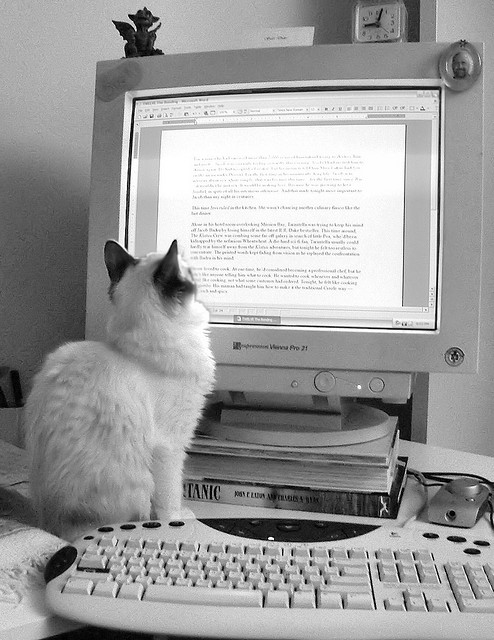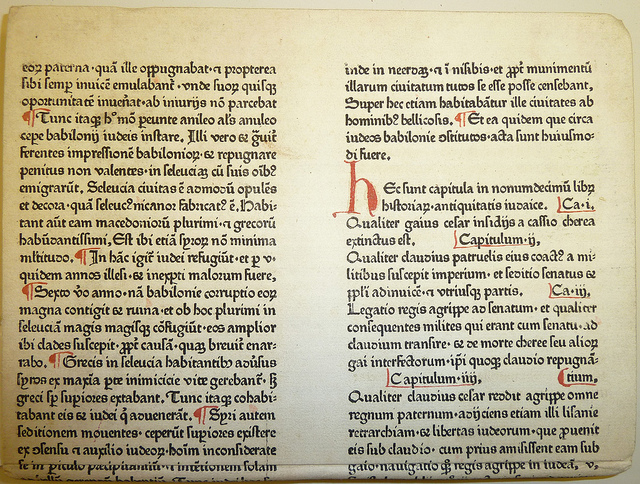
One tricky aspect of good writing is knowing when and how to use those pesky quotation marks. In general, quotation marks should be used in only the following situations:
- to frame the actual words spoken by someone (monologue or dialogue)…
- when inserting information that is being taken directly from a book or other source…
- to clarify that a word or phrase is unique in the sense that it has a special meaning which is different from how it is typically used or because someone
has used it in a special way…
- to indicate the title of a short story, poem, essay, play or other stage presentation, a newspaper or magazine article, a film, a painting, a sculpture, a musical piece, or a television or radio program. In general, the titles of books are not enclosed by quotation marks.
The following end punctuation marks are always enclosed within quotation marks: periods, commas, question marks, and exclamation points. If, however, the question mark or exclamation mark was not part of the original quoted text, and is a part of your sentence, it should be placed after the quotation marks. This will be explained below.
Colons and semicolons always follow words in quotation marks unless they are part of the original text that is being quoted. That will also be explained below.
The best way for you to understand the proper use of quotation marks is to look at examples of their use:
Quotation marks in a monologue or dialogue:
“What did he tell you?” asked Jim.
“I thought I wasn’t going to like the movie,” the boy said to his mother.
Bob replied, “Yes, I am ready to go!”
Tina closed the book, and murmured, “That was quite a story.”
“How could you lie to me?” the mother asked. “I wouldn’t have punished you.”
Sometimes, quoted text is found within a quote:
“My sister always says, ‘Life isn’t fair.’”
“I just read ‘Leaves of Grass,’ Walt Whitman’s famous work,” stated Mr. Smith.
In the examples above, the interior quote in each sentence is surrounded by apostrophes.
Direct quoting from a book or other source:
The author stated, “The Roman Empire spread far and wide.”
Jones, in his article, asks, “Which American President has not made unfortunate decisions?”
“Three years of study was not enough time to cover the subject,” the researchers concluded.
Please note: the examples of quoted material above do not conform to MLA, APA, or to most other academic formats for citing sources. That information can be found on the homepage of Papercheck by clicking Additional Resources, and then Writer’s Resources.
A long section of quoted text (more than two lines) does not have to be enclosed by quotation marks; it should be separated by two lines both below and above other text on the page, and it should be indented, as is shown below:
Charles Dickens gets right to point on page one of David Copperfield:
Whether I turn out to be the hero of my own
life, these pages must show. To begin my life
with the beginning of my life, I record that I
was born (as I have been informed and
believe) on a Friday, at twelve o’clock
at night. It was remarked that the clock
began to strike, and I began to cry,
simultaneously.
Quotation marks for unique phrases:
The teacher explained that the new child needed special attention because he appeared to be “different.”
My father can’t be disturbed because he is taking what he calls a “siesta.”
Today, we’re going to one of Mr. Carson’s “special lectures.”
Quotation marks in titles:
We had to read a short story called “The Lottery.”
I did not like reading “Hamlet,” but the stage production was wonderful.
The headline read “Local Man Wins Huge Settlement.”
Titles of full-length books should not be in quotation marks:
The names of full length books or magazines or newspapers should be written in italics or should be underlined, not enclosed by quotation marks:
We had to read Oliver Twist.
My favorite book is All The King’s Men.
She reads The New York Times every morning.
Colons and semicolons are always placed after quoted text, unless they had originally been part of the quoted section:
I enjoyed reading “Romeo And Juliet”; it is magnificent.
There is only one reason to watch “Sixty Minutes”: to enjoy Andy Rooney’s commentary at the end.
Here is an example of a quoted sentence in which a colon and a semicolon are enclosed within the quotation marks because they were in the original quoted text:
“My favorite foods are as follows: pasta, fruit, and ice cream; I eat them all every day,” said the man.
Special rule involving the addition of question marks or exclamation marks to sentences which include quoted text:
If your sentence is an interrogatory or exclamatory sentence, and it contains a section of quoted text or a title, then the question mark or exclamation mark must be placed after the end quote:
Do you agree with Professor Henderson’s dictum that “One can never be too prepared for a test”?
In the example above, the original quote was not a question. The reason why the question mark was inserted after the quote is because the person writing the sentence (not Professor Henderson) is asking a question about the quote.
I’m going to explode the next time he sings, “Satisfaction”!
In the above sentence, the exclamation point belongs after the name of the song because it is not part of the title. It clarifies the speaker’s emotional state.
Please note: quotation marks should never be used just to make a phrase or sentence stand out, as in the following examples:
Come to our “Big Sale.”
We’re having a “Surprise Party” for my mother.
The school is planning a “Beach Party.”
The best way to learn to use quotation marks (and the best way to learn to write well) is to read, and, as you read, to observe.
And you can quote me on that!









